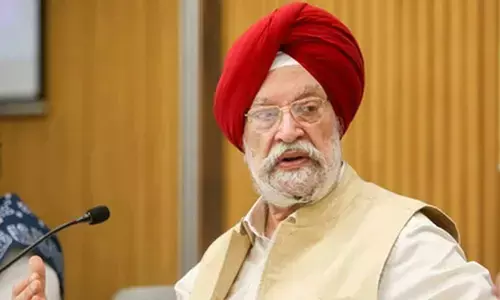How Does Social Media Impact School Students and Their Academics?

Social media refers to online platforms where people share content and interact with others.
Social media refers to online platforms where people share content and interact with others. Its use is growing rapidly among students, with 80% of Indian students using social media regularly. While social media offers benefits like enhanced communication and access to educational resources, it can also have negative effects on academic performance.
For instance, studies show that 60% of students report distractions and reduced focus due to social media use. Social media in educationenhances student engagement and fosters collaborative learning experiences. Therefore, social media's impact on students' academic success in India can be both positive and negative.
Balancing Social Media Use for Success
Positive Impacts
Academic
Educational Resource: Social media can serve as a valuable platform for learning, research, and collaboration. In India, a 2023 report revealed that 74% of students use social media for educational purposes, finding content, joining study groups, and accessing resources to support their academic work. This widespread use highlights the significant impact of social media on students in education, enabling them to enhance their learning experiences and connect with peers across the country.
Motivation and Inspiration: Social media helps students find role models and set academic goals. Following successful individuals and engaging with motivational content can inspire students and encourage them to strive for better academic performance. This aspect highlights the positive social media impact on students.
Time Management and Organization: Social media tools can assist with scheduling and planning studies. Students can use apps and reminders to manage their time effectively, helping them stay organized and on track with their academic responsibilities.
Communication and Collaboration: Social media helps students in India with communication and collaboration for group projects and peer learning. Around 70% of Indian students use social media to connect with classmates, share ideas, and work together on assignments, improving their learning experience.
Negative Impacts
Distraction and Time Management: Excessive use of social media can lead to procrastination and distract students from their studies. The time spent on social media often replaces time that could be used for homework and study, showing the negative social media impact on students.
Academic Performance Decline: High social media usage is linked to lower grades. In India, students spend over three hours daily on social media and report declining academic performance.
Cyberbullying and Mental Health: Social media can expose students to cyberbullying, which negatively impacts their mental health and concentration. The effect of social media on education is also seen in how online harassment affects students' well-being and ability to focus on their studies.
Sleep Deprivation: Late-night social media use can disrupt sleep patterns, leading to sleep deprivation. This affects cognitive function and academic performance, demonstrating another adverse social media impact on students.
Encouraging Healthy Online Habits
Digital literacy is crucial in today's world, especially for students. It involves understanding how to use digital tools and platforms effectively and, most importantly, safely. With the increasing use of social media, being digitally literate helps students navigate these platforms wisely, avoiding potential risks like misinformation and cyberbullying.
The Digital Divide: The more sophisticated the device, the wider the gap!
In India, women are much less likely to own a smartphone compared to men. In fact in 2019, 37% of men owned smartphones, compared to only 14% of women. However, the gap narrows with basic phones, where 29% of men and 31% of women owned one during the same period.
Understanding digital literacy also allows students to harness the benefits of social media for learning and collaboration, and bridge the digital divide among students.
Here are some strategies that can be used for healthy social media use:
Set Time Limits
Limit the amount of time spent on social media each day to ensure it doesn’t interfere with studies or other important activities.
Mindful of Content Be
Think before posting or sharing. In India, 70% of students feel pressured to post content that meets social expectations, and 30% face online harassment. Ensure your online behaviour reflects positive values to avoid negative impacts.
Use Social Media for Learning
The influence of social media on students shapes their learning habits and communication skills. Follow educational pages and join study groups. Social media can be a helpful tool if used for learning and growth.
Monitor Privacy Settings
Regularly check and update privacy settings to protect your personal information and avoid unwanted attention online.
Role of Parents and Educators
Parents and educators play a vital role in guiding students through the complexities of today’s digital world, especially when it comes to social media. Their influence is crucial, as 65% of students who receive digital literacy guidance from adults use social media more responsibly.
By staying informed about the latest trends and tools, parents and educators can provide relevant advice and set appropriate boundaries to address the effects of social media in education. Open communication is essential; discussing the potential risks and benefits of social media with students helps them make informed decisions.
Modeling positive online behavior helps parents and educators set a strong example for students. This not only protects students from potential risks but also empowers them to use social media to support their learning and personal growth.
Conclusion
In conclusion, social media in education offers new ways to connect and share knowledge beyond the classroom. While integrating social media into education has its benefits, it requires teachers to have a solid grasp of both the subject matter and digital tools.
Institutions like Varthana are playing a major role by supporting educational institutions with resources and training for teachers, thereby enhancing the quality of education. However, the role of parents is also important in fostering positive online behaviour among students.
We encourage you to engage in discussions about how we can collectively leverage social media for educational advancement and support initiatives that promote effective teaching and learning.
(No Hans India Journalist was involved in creation of this content)














